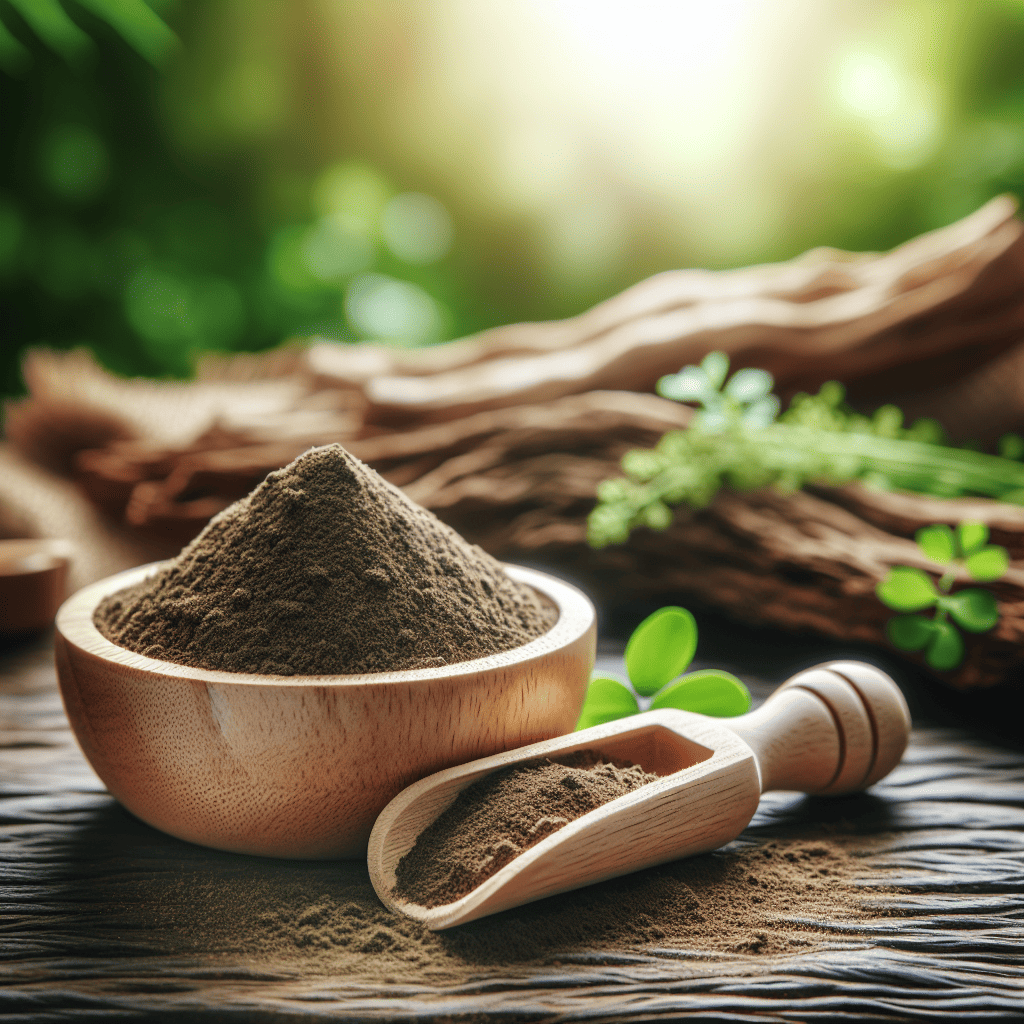Introduction: Flower honey, obtained from the nectar of various flowers, offers a plethora of health benefits. In this comprehensive guide, we will delve into the advantages of incorporating flower honey into your diet, ranging from its nutritional aspects to its impact on immune system support and brain function.
Table of Contents
Rich in Nutrients
Flower honey is a nutrient powerhouse crucial for overall well-being. Let’s explore the vitamins, minerals, amino acids, and enzymes present in this natural nectar.
- Honey’s Remarkable Nutrient Profile:
Flower honey is a natural and nutritious sweetener that contains a variety of essential vitamins and minerals. Vitamins such as B2, B3, and B5 are present in flower honey, providing important nutrients that are beneficial for overall health. These vitamins play key roles in energy production, metabolism, and cell function, contributing to a well-rounded and nourishing diet.
In addition to vitamins, flower honey is also rich in minerals like calcium, magnesium, manganese, and zinc. Calcium is essential for bone health, magnesium supports muscle function and nerve transmission, manganese aids in nutrient metabolism, and zinc is important for immune function and wound healing. By incorporating flower honey into your diet, you can benefit from a diverse range of minerals that are vital for various physiological processes in the body.
Moreover, flower honey contains vital amino acids and enzymes that further enhance its nutritional profile. Amino acids are the building blocks of proteins and play crucial roles in muscle repair, hormone production, and neurotransmitter synthesis. Enzymes, on the other hand, are essential for digestion and metabolic functions. The presence of amino acids and enzymes in flower honey not only adds to its nutritional value but also supports overall bodily functions, making it a valuable addition to a healthy diet.
- Health Benefits of Nutrient-Rich Honey:
Honey is known to contain a wide range of important nutrients that are beneficial for human health. It is rich in antioxidants, enzymes, vitamins, and minerals. Antioxidants help to protect the body from free radicals, which can cause damage to cells and lead to various illnesses, including cancer and heart disease. The enzymes present in honey can aid in digestion and promote a healthy gut. Vitamins such as Vitamin C and Vitamin B complex found in honey are essential for boosting the immune system, maintaining healthy skin, and supporting overall well-being. Additionally, honey contains important minerals like iron, calcium, and potassium, which are vital for various bodily functions, including muscle function, bone health, and blood regulation.
The nutrient composition of honey can have a positive impact on specific health conditions and overall wellness. For example, the antioxidants in honey have anti-inflammatory properties and may help reduce the risk of chronic diseases such as arthritis. The vitamins and minerals in honey can also support energy levels and aid in recovery after physical activity. Furthermore, honey is a natural sweetener that can be a healthier alternative to refined sugar, providing a source of energy without causing spikes in blood sugar levels. The combination of nutrients in honey makes it a versatile food that can be incorporated into various dishes and beverages to enhance both flavor and nutritional value.
In addition to its nutrient composition, honey has been used for its medicinal properties for centuries. It has antibacterial and antifungal properties that can help boost the immune system and fight off infections. Honey is also known for its soothing effect on sore throats and coughs, making it a common home remedy for respiratory issues. Its natural sweetness and ability to preserve food have made honey a popular ingredient in traditional medicine practices worldwide. Overall, the nutrient-rich profile of honey, combined with its medicinal properties, makes it a valuable food source that supports human health and well-being in multiple ways.
Rich in Antioxidants
Discover the potent antioxidant properties of flower honey and their profound impact on cellular protection and disease prevention.
- Unveiling the Antioxidant Content:
Polyphenols are a group of antioxidant compounds found in honey that have been extensively studied for their health benefits. Honey contains various types of polyphenols, including flavonoids, phenolic acids, and tannins, which contribute to its antioxidant properties. These compounds help to neutralize harmful free radicals in the body, which are unstable molecules that can cause damage to cells and lead to oxidative stress. By scavenging free radicals, polyphenols in honey help to protect cells from oxidative damage and reduce the risk of chronic diseases such as cancer, heart disease, and neurodegenerative disorders.
The antioxidant activity of honey varies depending on factors such as the floral source, geographical location, and processing methods. Darker honeys, such as buckwheat or manuka honey, are generally found to have higher levels of polyphenols and greater antioxidant activity compared to lighter varieties. Raw honey, which is minimally processed and not heated, retains more of its natural polyphenols and enzymes, making it a healthier choice for reaping the antioxidant benefits. However, even processed or pasteurized honey still contains beneficial polyphenols, although in potentially lower quantities.
In addition to its antioxidant properties, honey offers a range of other health benefits, including antibacterial, anti-inflammatory, and immune-boosting effects. The combination of antioxidants and other bioactive compounds in honey makes it a valuable natural remedy for promoting overall health and well-being. Including honey in your diet as a sweetener or natural remedy can help to support your body’s antioxidant defenses, reduce inflammation, and potentially lower the risk of chronic diseases over time. By incorporating honey into your daily routine, you can harness the power of polyphenols and other beneficial compounds to boost your health and protect against oxidative stress.
- Impact of Antioxidants on Health:
Honey contains a variety of antioxidants, such as phenolic compounds like flavonoids, which have been shown to play a crucial role in reducing the risk of heart disease, diabetes, and certain types of cancer. These antioxidants help to neutralize harmful free radicals in the body, which can cause damage to cells and lead to various health issues. By scavenging these free radicals, honey’s antioxidants help protect the body from oxidative stress, thereby reducing inflammation and lowering the risk of chronic diseases.
In terms of heart health, studies have demonstrated that the antioxidants in honey can help improve various risk factors associated with cardiovascular disease, such as reducing bad cholesterol levels (LDL) and increasing good cholesterol levels (HDL). Additionally, honey’s anti-inflammatory properties can help protect the heart by reducing inflammation in the arteries and decreasing the risk of blood clot formation. These combined effects make honey a valuable dietary addition for maintaining a healthy heart and reducing the risk of heart-related conditions.
Furthermore, honey’s antioxidants have also been linked to a lower risk of developing diabetes and certain types of cancer. By combating oxidative stress and inflammation, honey can help improve insulin sensitivity and regulate blood sugar levels, which are crucial in preventing and managing diabetes. The anti-cancer properties of honey’s antioxidants have shown promising results in various studies, indicating their potential in inhibiting the growth of cancer cells and reducing the risk of certain types of cancer, such as breast and colon cancer. Overall, the disease-fighting capabilities of honey’s antioxidants make it a beneficial natural remedy for promoting overall health and reducing the risk of chronic illnesses.
Accelerate Wound Healing
Discover how flower honey speeds up the wound healing process, providing a natural remedy for injuries and wounds.
- Antimicrobial Properties of Honey:
Honey’s antimicrobial properties have been well-documented and utilized for centuries. One of the key ways honey prevents microbial growth is through its high sugar content, low water activity, and acidic pH. The high sugar concentration in honey creates an osmotic effect that draws moisture out of bacterial cells, causing them to dehydrate and die. Additionally, the low water activity in honey means there is not enough water available for bacteria to grow and reproduce. The acidic pH of honey, ranging from around 3.2 to 4.5, also creates a hostile environment for many bacteria, further inhibiting their growth. These factors work synergistically to prevent microbial growth in honey, making it a natural and effective antimicrobial agent.
By inhibiting microbial growth, honey can lower the risk of infections in wounds. When applied to a wound, honey creates a barrier that prevents bacteria from thriving, reducing the chances of an infection taking hold. In addition to preventing bacterial growth, honey also has anti-inflammatory properties that can help reduce swelling and redness around a wound. This can further aid in preventing infections by controlling the body’s inflammatory response to injury. By reducing the microbial load in a wound and calming inflammation, honey creates an optimal environment for the body’s natural wound healing processes to take place, promoting faster recovery and reducing the risk of complications.
Furthermore, honey’s antimicrobial attributes play a crucial role in aiding rapid wound recovery. Studies have shown that honey not only prevents microbial infections but also promotes tissue regeneration and wound healing. The antimicrobial compounds in honey help keep the wound area clean and free from infection, allowing the body to focus its resources on repairing damaged tissue. Honey also contains a variety of nutrients and enzymes that can nourish the skin and promote the growth of new cells. This combination of antimicrobial properties, anti-inflammatory effects, and tissue-regenerating capabilities makes honey a valuable natural remedy for promoting rapid wound healing. Its ability to prevent infections, reduce inflammation, and support tissue repair make honey a powerful ally in the healing process for various types of wounds.
- Healing Benefits of Honey:
Honey has been widely known for its remarkable healing properties for centuries. One of the key characteristics of honey that make it beneficial for wound healing is its antibacterial compounds. Honey contains natural hydrogen peroxide, which gives it antibacterial properties. This means that honey can help prevent infection in wounds by killing bacteria and other harmful microbes. Additionally, honey’s low pH level and high sugar content create an environment that is not conducive to the growth of bacteria, further aiding in the healing process. The presence of antioxidants in honey also helps in reducing inflammation and promoting tissue regeneration. These antibacterial properties of honey play a crucial role in protecting the wound from infection and supporting the body’s natural healing processes.
In addition to its antibacterial properties, honey’s moisture-retaining characteristics also play a significant role in faster wound healing. The high sugar content in honey helps to draw moisture from the environment and retain it in the wound area, creating a moist healing environment. This moist environment is conducive to cell growth and prevents the wound from drying out, which can impede the healing process. By maintaining an optimal level of moisture in the wound, honey facilitates the formation of new blood vessels and the production of collagen, which are essential for tissue repair and the formation of new skin. The moist environment also helps in the removal of dead tissue and debris from the wound, promoting faster healing and reducing the risk of scarring.
Furthermore, honey’s protective qualities extend beyond its antibacterial and moisture-retaining properties. The sticky texture of honey forms a barrier over the wound, protecting it from external contaminants and reducing the risk of further infection. This protective barrier also helps in keeping the wound area clean and free from debris, which is crucial for the healing process. Moreover, honey has been found to have anti-inflammatory effects, which can help reduce pain, swelling, and redness in the wound area. By creating a protective shield, maintaining moisture, and reducing inflammation, honey acts as a natural wound dressing that promotes faster healing and minimizes the chances of complications during the healing process.
Antibacterial Properties
Delve into the antibacterial properties of flower honey and its role in combatting microbial threats and maintaining cleanliness.
- Propolis and Antibacterial Action:
Propolis is a resin-like substance that bees collect from tree buds and other plant sources and mix with bee enzymes for various purposes within the hive. It serves as a protective barrier against infections, bacteria, and other harmful intruders. The combination of propolis in honey, along with hydrogen peroxide, creates a potent antimicrobial environment. The propolis in honey contains high levels of flavonoids and phenolic compounds, which contribute to its antibacterial properties.
Hydrogen peroxide is a common component found in honey and is derived from the enzyme glucose oxidase, which bees add to nectar. When honey comes into contact with wound fluids or tissues, the enzyme glucose oxidase breaks down glucose from honey into gluconic acid and hydrogen peroxide. Hydrogen peroxide has strong antifungal and antibacterial properties, making it effective in preventing microbial growth. The combination of propolis and hydrogen peroxide creates a synergistic effect, enhancing the overall antimicrobial qualities of honey.
The antifungal and antibacterial characteristics of propolis in honey, along with hydrogen peroxide, make honey a natural and effective remedy for various health issues. These properties make honey a popular choice for wound healing, sore throat relief, and boosting overall immunity. The synergistic action of propolis and hydrogen peroxide in honey showcases nature’s ability to provide powerful solutions for combating microbial threats. By leveraging the benefits of propolis and hydrogen peroxide in honey, individuals can harness the natural antimicrobial properties of this sweet substance for improved health and well-being.
- pH Level and Microbial Inhibition:
Honey possesses natural antibacterial properties due to its unique chemical composition. Its low pH level, which typically ranges between 3.2 and 4.5, creates an acidic environment that inhibits the growth of many harmful bacteria. This acidity is primarily a result of the presence of gluconic acid, formed when bees add enzymes to the nectar during the honey-making process. Additionally, the high sugar content in honey contributes to its antimicrobial properties. Honey contains roughly 80% sugars, predominantly glucose and fructose, which bind water molecules through a process called osmosis. This deprives bacteria of the water they need to survive, essentially dehydrating and killing them. Therefore, the combination of low pH and high sugar content in honey creates a hostile environment for microbes, making it an effective natural preservative and wound healer.
The ability of honey to hinder microbial growth not only makes it a valuable food product but also a potent natural remedy for various health conditions. For centuries, honey has been used topically to treat wounds and burns due to its antiseptic properties. By creating an environment that is hostile to bacteria growth, honey helps to prevent infections in wounds, promoting faster healing and reducing the risk of complications. The antimicrobial action of honey has also been studied in the context of combating antibiotic-resistant bacteria, such as MRSA (Methicillin-resistant Staphylococcus aureus). Researchers have found that the unique combination of acidity, sugar content, and other bioactive compounds in honey can effectively inhibit the growth of these dangerous pathogens, highlighting its potential as a natural alternative to traditional antibiotics.
Moreover, the sterile environment created by honey’s low pH and high sugar content not only prevents microbial infections but also supports overall health and well-being. By consuming honey, either directly or as an ingredient in various dishes and beverages, individuals can benefit from its antimicrobial properties internally. The antimicrobial action of honey in the body helps to maintain a balance of good bacteria in the gut and supports the immune system in fighting off harmful pathogens. Regular consumption of honey can contribute to a healthy microbiome and may help protect against gastrointestinal infections and other microbial-related illnesses. Therefore, honey’s ability to create a sterile environment by inhibiting microbial growth has far-reaching implications for both external wound care and internal health maintenance.




